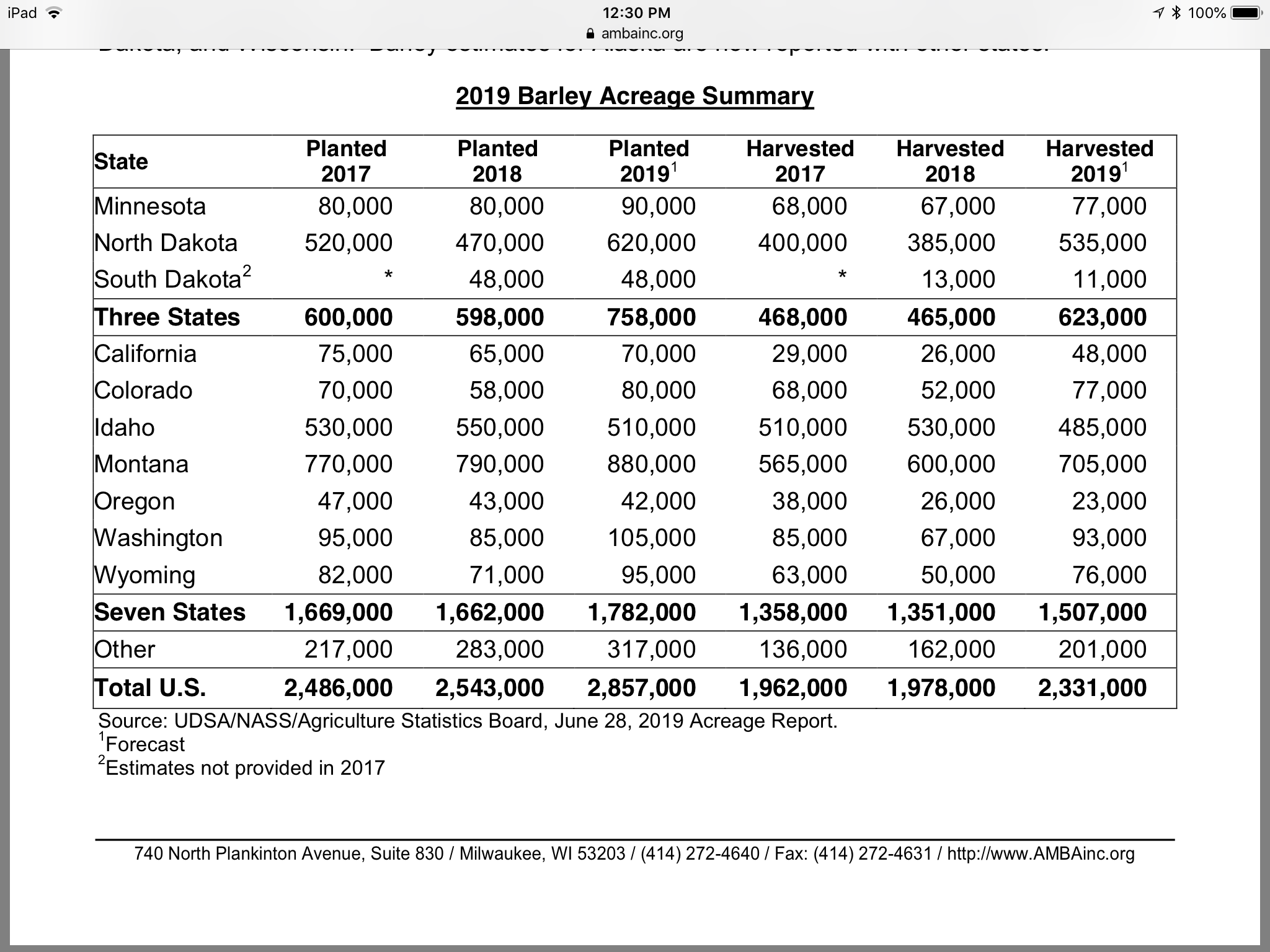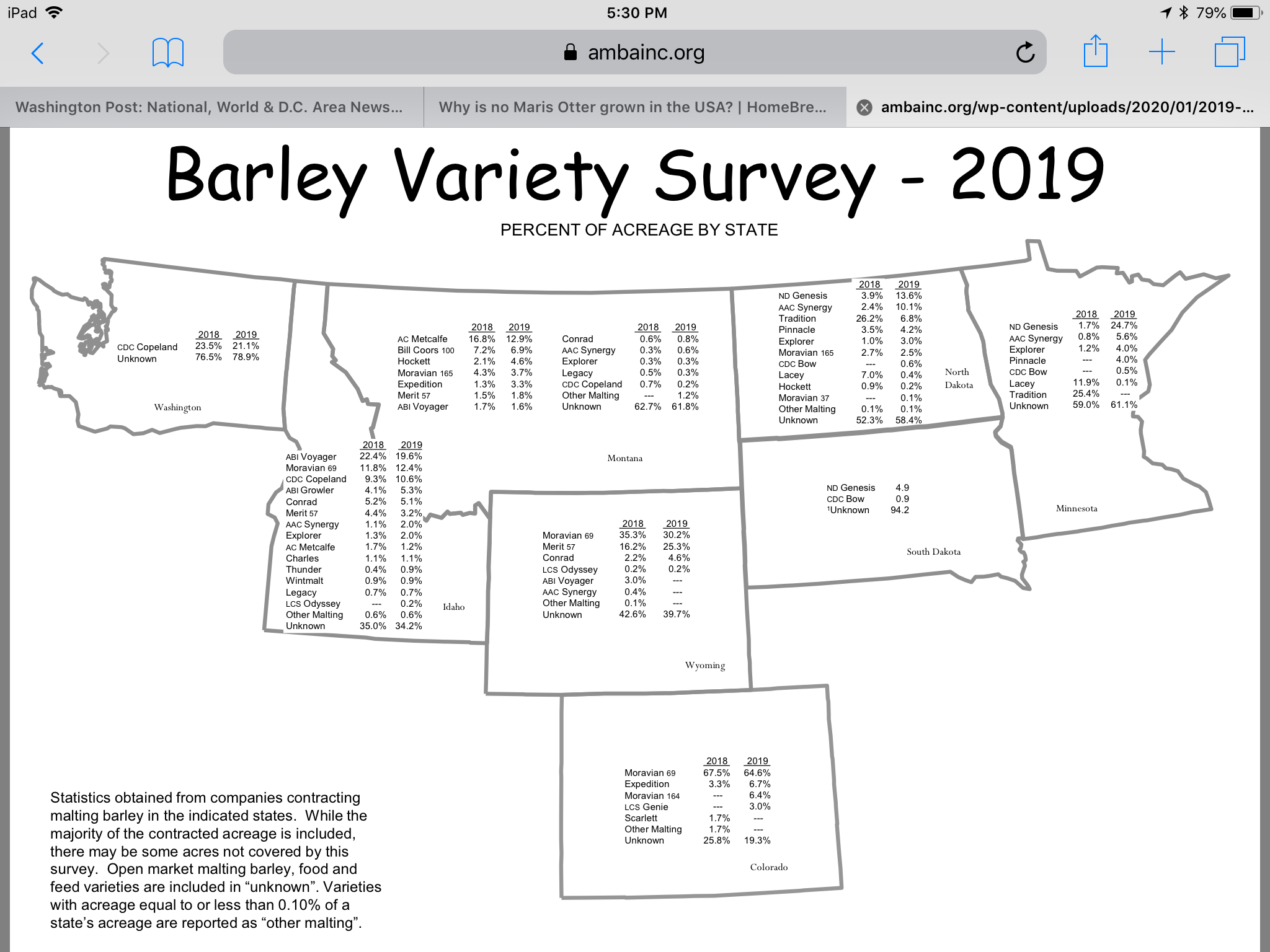Silver_Is_Money
Larry Sayre, Developer of 'Mash Made Easy'
What I mean here of course is: Why don't any of the major maltsters grow the Maris Otter strain of 2-Row barley here in the USA?

What I mean here of course is: Why don't any of the major maltsters grow the Maris Otter strain of 2-Row barley here in the USA?
Or similar floor malted barley, either M.O. or Bohemian Pils? I love me some Weyermann malts, but how 'bout some North American maltsters produce some Euro style malts and roasting processes?



![Craft A Brew - Safale S-04 Dry Yeast - Fermentis - English Ale Dry Yeast - For English and American Ales and Hard Apple Ciders - Ingredients for Home Brewing - Beer Making Supplies - [1 Pack]](https://m.media-amazon.com/images/I/41fVGNh6JfL._SL500_.jpg)








Or similar floor malted barley, either M.O. or Bohemian Pils? I love me some Weyermann malts, but how 'bout some North American maltsters produce some Euro style malts and roasting processes?
Even if you lumped together all of grain purchased by craft brewers you would not even get close to the grain needs of the large industrial brewers.
If your interested in floor malted grains, Hudson Valley malts in NY floor malts all their grains.Or similar floor malted barley, either M.O. or Bohemian Pils? I love me some Weyermann malts, but how 'bout some North American maltsters produce some Euro style malts and roasting processes?

Similarly, and perhaps related, valleymalt.com in Hadley MA does some floor malting. I recently got a bag of their two row pale and the aroma is crazy good...
Cheers!
I’m a grain farmer, on the northern plains, which is the principal barley growing region in the US. Barley is, truly, a specialty crop. The total production of barley, nationwide, is a fraction of the production of corn, soybeans, or wheat in any one of the states which grow those crops.
I’m planning to plant some malt barley this spring, for the first time in 7 or 8 years. The price of malt barley hasn’t really made it an attractive crop for us to grow, when compared to the other crops we produce, for years. Last fall, winter came early to this part of the world (we had a foot of snow in mid-September), so we weren’t able to plant winter wheat. In order to maintain our crop rotation (a cereal crop on land that lay fallow the previous year, followed by a pulse crop, usually yellow peas, followed by another cereal crop, then a year of fallow) we have to plant something besides spring wheat on the land which had winter wheat on it last year. To avoid potential disease problems we try to avoid following wheat with wheat.
We’ll be planting a variety called AC Metcalfe which is the most popular malt variety, other than the proprietary varieties grown under contract to InBev and MillerCoors. Metcalfe is a standard 2-row variety which is, far and away, the most popular malt variety in the US and Canada. There simply is no market for “boutique” barley varieties, and any which are grown in the US are produced in very small quantities expressly for the handful of specialty maltsters which exist.
The chart below shows the planted and harvested acres of malt barley in the US for the last 3 years. The ten states whch are listed separately account for virtually all the barley grown in the US. The bulk of that is grown under contract to the BMC brewers. Two million acres and change is a rounding error in the total production of major field crops in the US. There simply isn’t enough demand for any more.
View attachment 676808

Harrington is no longer a recommended variety. It was popular for years, and was touted as a dual purpose (malt or feed) variety. We grew it for a long time and never had any problem selling it for malt.Harrington must have gone the way of Klages. I didn't see either on the above map.